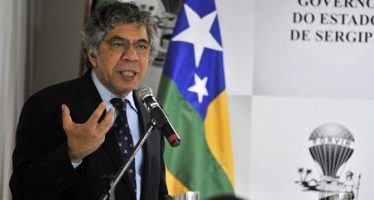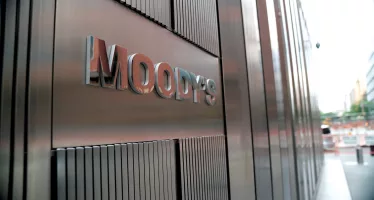WTO: The Changing Nature of Global Trade
By DG Pascal Lamy
Although global supply chains have been with us for several decades, their increasing prominence is rapidly changing the landscape of international trade in ways which will require fresh thinking about how trade affects national economies and how this impact should be assessed.
Today we trade in “tasks” and can no longer rely solely on gross trade flows as a measure of international trade. We need to think in terms of where the value is added in the production process. For example, a casual look at gross trade statistics could easily lead to the impression that an Apple iPhone imported from China is simply made in China and that all the jobs necessary to produce this good are Chinese jobs. But China adds a small fraction of value to such a product — as reflected in the final price — usually at the assembly stage. China’s share is well below 10 per cent. Meanwhile, many other countries, including Japan, the United States and Korea will have added value and created jobs through design, component production, branding, marketing and a range of other services that go into the product. For a number of products where after-sales service or after-sales software products can be incorporated, the supply chain lives on after a product has been retailed.
Measuring bilateral trade flows in value-added terms casts a decidedly different light on the way we consider surpluses or deficits. Seeing things this way can alter the trade policy debate. In value-added terms, China’s trade surplus with the United States in recent times, for example, is some 40 per cent less than the gross trade figures would have you believe.
Seven decades of trade-opening has significantly diminished the importance of tariffs.
– DG Lamy
The increasingly integrated nature of production has implications for trade policy too. To properly shape trade policy one needs to have a better handle on the data. One challenge is how to disaggregate the elements of complex supply chains into the individual components, both goods and particularly services. Some services are embedded in physical components and counted as goods. Others are part of the pre- and post-manufacturing stages of production. Together they are a large part of total production costs. Understanding services inputs better not only makes it possible for governments to think about how producers can capture more value-added along supply chains, but also how to set the best possible policy framework for services.
Another challenge concerns assessing and managing risks along supply chains. Cost minimization may entail risks that need to be addressed.
A third challenge is how to encourage the participation of small and medium sized enterprises in supply chain production, bearing in mind that it is the SMEs that have proven to be among the most successful creators of jobs. We are already tackling part of these issues in the Trade Facilitation Agreement negotiations. But probably more could be done in increasing transparency, through proper data bases.
Seven decades of trade-opening has significantly diminished the importance of tariffs. Today trade rules weigh heavily on the minds of exporters: Sometimes regulations, standards and administrative procedures act as trade barriers. Such rules are not necessarily designed to reduce or complicate trade. Some are just a matter of seeking out greater efficiency and improving governance.
Preferential trade agreements (PTAs) have contributed significantly to increasing trading opportunities, going beyond what has been attainable in a multilateral setting. But they have also given rise to multiple, criss-crossing rules of origin that can prove a veritable barrier to trade in their own right.
Divergent regulatory approaches within PTAs may also create confusion and higher costs for businesses that must adapt to a myriad of different regimes across such agreements. Where supply chains are concerned the impact of unnecessary obstacles to trade, especially at an early, upstream stage in the chain, will be magnified as affected components or services cross borders.
Obvious questions arise from the way politics, technologies and business practices have transformed production internationally. Clearly, we need to update our approach to negotiating greater co-operation among nations. Does it make sense, for instance, to negotiate goods and service along separate tracks, under separate agreements, as we do now? We have learnt enough about how supply chains work to appreciate how intimately linked policies are in the fields of goods and services.
Could we develop innovative ways of managing rules of origin, in cases where these are deemed necessary, so as to reduce or eliminate their inhibiting and cost-augmenting effects on trade? Moreover, as non-tariff measures have become such a prominent part of the trade policy tool box, how should we address the necessary convergence of regulatory regimes? Harmonization? Mutual recognition? What is the proper forum to address such as convergence?
Given the organic links between trade and investment, should we continue to compartmentalize these two ways of accessing markets? Does it make sense to separate trade policy and competition policy? Considering the nature of inter-dependency among countries along supply chains, should we rethink the motivation and utility of trade remedies such as antidumping or countervailing duties?
The tectonic shift in trade patterns and practices confronts businesses and policymakers with a spate of new challenges. To meet these challenges means changing the way we think, the way we act and the way we govern.
You may have an interest in also reading…
Otaviano Canuto, World Bank: What’s Ailing the Brazilian Economy?
Brazil’s GDP is poised to decline by close to 7% in 2015-2016. Per capita GDP in 2016 is likely to
Biggest Commodity Price Shock in 50 Years is Here
In addition to death and destruction in Ukraine, the Russian invasion brought several significant shocks to the global economy. The
Moody’s Ratings: Leading in Transition Finance, and Embracing Digital Innovation
A new positioning based on boldness, clarity, and perceptiveness. Moody’s Investors Service Transition to Moody’s Ratings: The Brand Evolution In





















































































